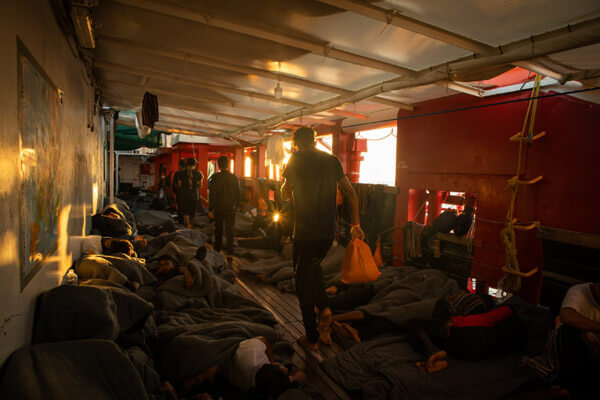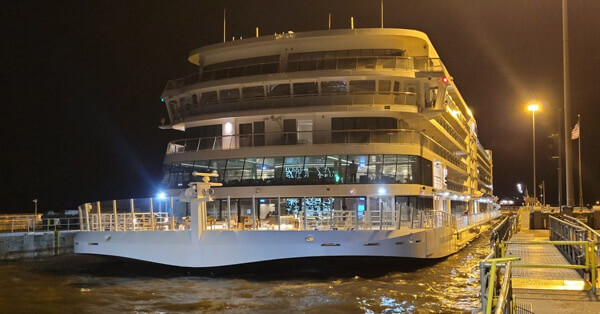The migrant crisis continues in the Mediterranean with volunteer organizations again calling on the world community to develop a better solution for handling the growing number of people attempting to flee the Libyan coast to reach the countries of southern Europe. The level of crisis is once again being highlighted by NGO SOS Mediterranee in partnership with the International Federation of Red Cross Red Crescent Societies (IFRC) calling on the European Union to allow 466 survivors to disembark from the Ocean Viking, an offshore support vessel that the NGO uses for its search and rescue missions.
The NGO reports that within just 60 hours on its most recent mission, the Ocean Viking faced more distress cases than ever before and the medical situations are growing more serve. During the most recent mission, four unseaworthy and overcrowded boats in distress were spotted from the bridge of the ship. The distress alerts of six other boats were also relayed by other NGOs to the Ocean Viking. Some of those that have been rescued have been aboard the vessel for up to eight days and it is now overcrowded with a total of 459 people remaining aboard, including women, children, and babies.
The NGOs said they are facing an overwhelming number of medical cases, including exhaustion, dehydration, and untreated skin infections and wounds, while other survivors are facing chronic medical conditions. Two nine-month-pregnant women were evacuated late last week from the vessel, but the ship remains stranded at sea waiting for the survivors’ disembarkation.

Migrants rescued from the Mediterranean waiting on the decks of the Ocean Viking (SOS Mediterranee)
“We have never experienced such levels of severe medical cases on board Ocean Viking before,” said Xavier Lauth, SOS Mediterranee Director of Operations. ”The survivors were found in the middle of high seas in unimaginable situations. In a desperate attempt to find safety, they were near death at sea, either by drowning or by dehydration. Per maritime law, their rescues will only be completed when they have reached a place of safety. The current blockade for their disembarkation must find an end without further delay.”
SOS Mediterranee and IFRC called on European members and associated states to show solidarity, observe maritime law and guarantee fundamental human rights by ending the wait and suffering of the survivors immediately. The Italian authorities on September 2 assigned the vessel to Taranto as a Place of Safety for the 459 survivors remaining aboard the Ocean Viking. However, as of September 4, the vessel remains offshore awaiting the authority to dock.
Europe continues to grapple with grappling with a worsening migrant crisis in the Mediterranean Sea that is being fueled by Libyan smugglers. In June, the UN reported that for the migrants, who are risking their lives to cross the Mediterranean to Europe on flimsy boats, the crossing has become more deadly. Their figures cited 3,231 deaths reported in 2021, up from 1,881 in 2020. Since the beginning of its operations in 2016, SOS Mediterranee reports it has rescued about 37,000 migrants, with over 7,000 rescued by the Ocean Viking since she started operating in August 2019. Built in 1986 and measuring 227 feet in length, she is a 2,000 gross ton vessel that the organization charters for its mission.







